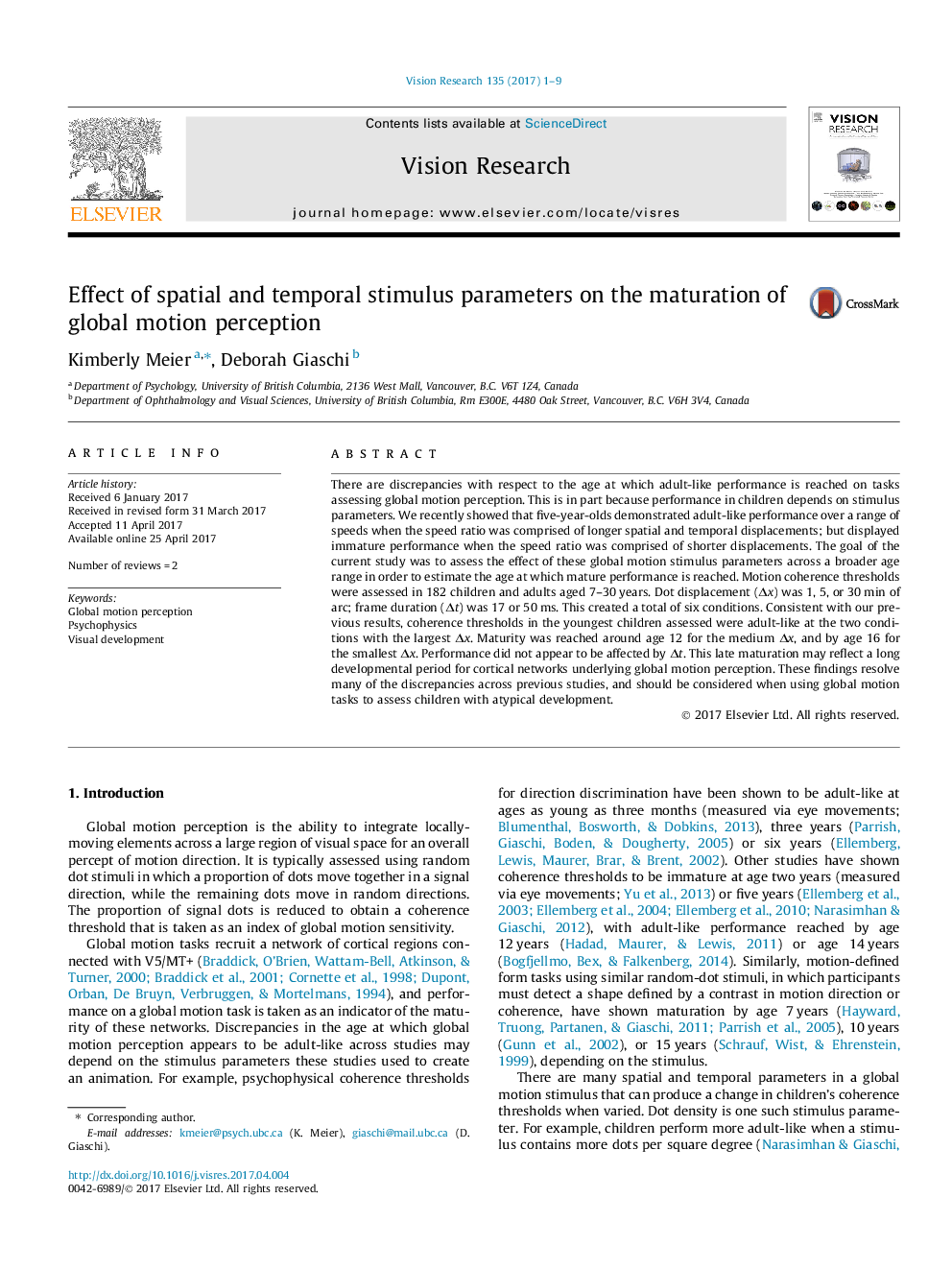| Article ID | Journal | Published Year | Pages | File Type |
|---|---|---|---|---|
| 5705904 | Vision Research | 2017 | 9 Pages |
Abstract
There are discrepancies with respect to the age at which adult-like performance is reached on tasks assessing global motion perception. This is in part because performance in children depends on stimulus parameters. We recently showed that five-year-olds demonstrated adult-like performance over a range of speeds when the speed ratio was comprised of longer spatial and temporal displacements; but displayed immature performance when the speed ratio was comprised of shorter displacements. The goal of the current study was to assess the effect of these global motion stimulus parameters across a broader age range in order to estimate the age at which mature performance is reached. Motion coherence thresholds were assessed in 182 children and adults aged 7-30Â years. Dot displacement (Îx) was 1, 5, or 30Â min of arc; frame duration (Ît) was 17 or 50Â ms. This created a total of six conditions. Consistent with our previous results, coherence thresholds in the youngest children assessed were adult-like at the two conditions with the largest Îx. Maturity was reached around age 12 for the medium Îx, and by age 16 for the smallest Îx. Performance did not appear to be affected by Ît. This late maturation may reflect a long developmental period for cortical networks underlying global motion perception. These findings resolve many of the discrepancies across previous studies, and should be considered when using global motion tasks to assess children with atypical development.
Related Topics
Life Sciences
Neuroscience
Sensory Systems
Authors
Kimberly Meier, Deborah Giaschi,
